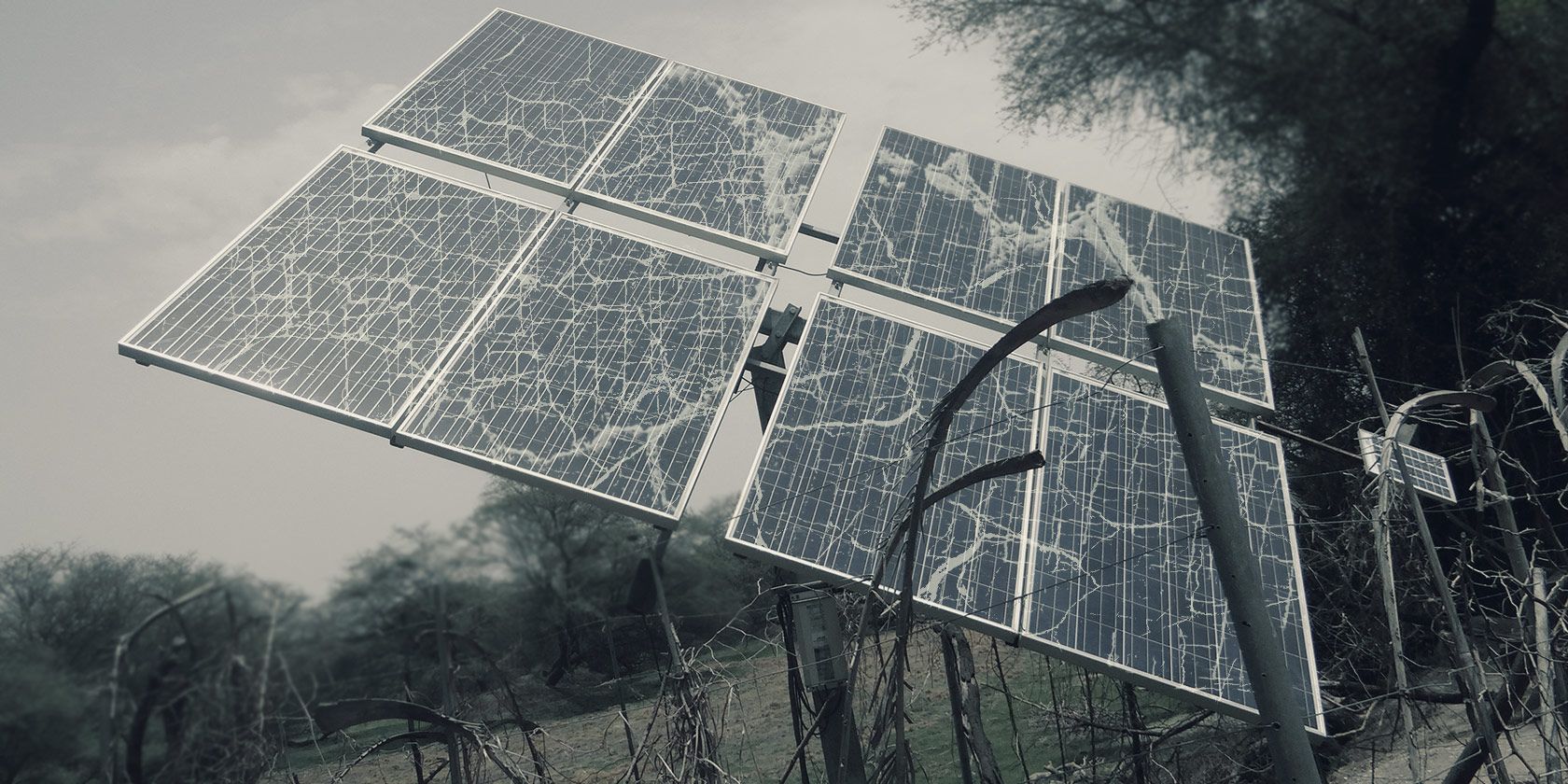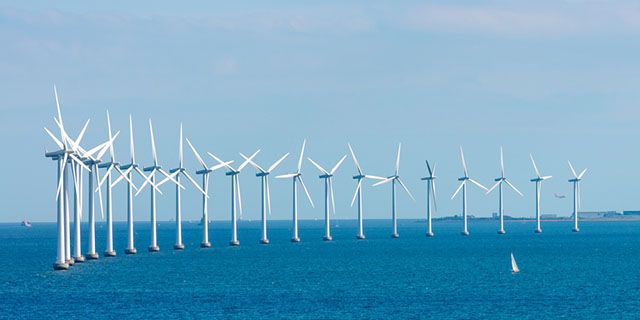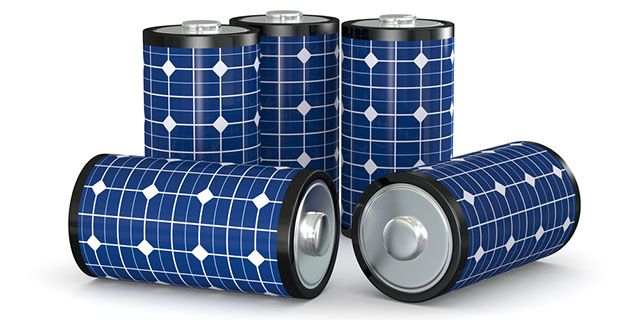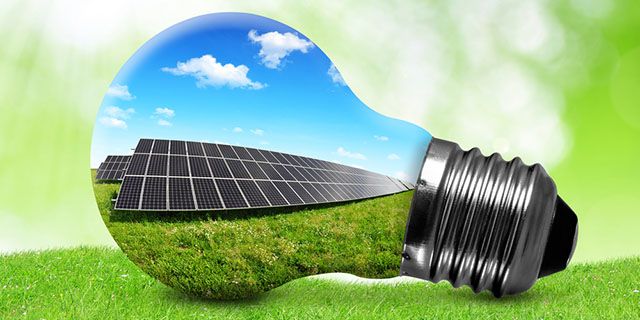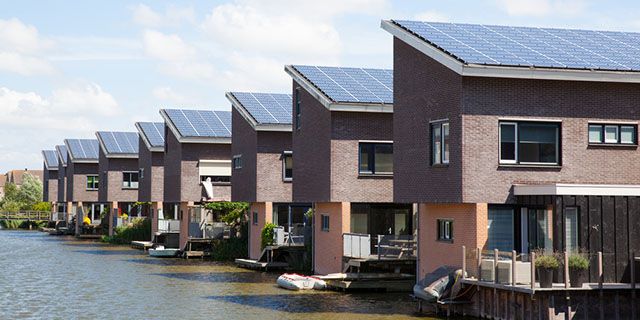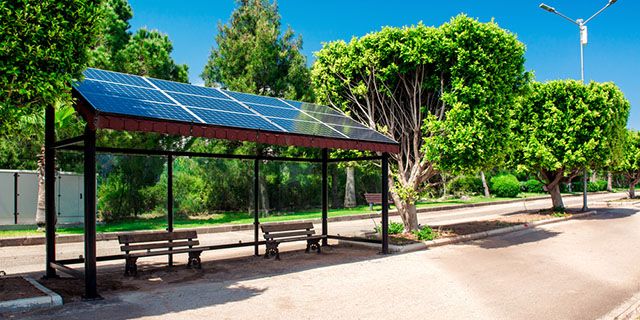What would happen if the world ran out of fossil fuel? No more cars, no more electricity, no more air conditioning. As soon as the last batteries were drained, we'd be right back in the Middle Ages. We can't let that happen.
Energy is expensive, and as we continue to deplete the Earth of its oil, the price of energy is only going to increase -- that is, unless we can find another way to generate electricity. When fuel is so crucial that gas-money-saving apps become commonplace, that's when you know the problem is real.
Seriously, we could run out of fossil fuels by 2060.
Solar energy is our best hope, but the development of said technology over the past few decades has been lackluster. How long before solar energy lives up to its promises? What's taking so long? Will the energy revolution arrive in time?
The World Needs Solar Energy...
To be fair, solar energy isn't the only alternative to fossil fuels. There are plenty of other avenues being explored by brilliant minds around the world, and while they all show varying amounts of potential, they all have serious drawbacks.
For example, wind power. Wind is everywhere and full of energy potential. It's green, has negligible pollution output, and is relatively efficient when it comes to space requirements.
Unfortunately, wind is unpredictable and often comes in intermittent surges, which isn't very useful unless we can develop long-term storage of the produced energy. Not to mention the fact that wind turbines can be disturbingly loud, and dangerous to maintain.
In addition, large wind farms can have an immediate impact on local weather (by influencing air circulation) and local wildlife (turbines killing birds and bats). This may be mitigated by the development of bladeless wind turbines, but it's still too early to tell.
Hydroelectric power is another fuel source that has proven effective but problematic. Hydropower dams are destructive to aquatic ecosystems, creating stagnant bodies of water, disrupting migration habits, and outright killing many kinds of fish.
Other forms of alternative energy, including biofuels and hydrogen, have difficulties overcoming the most basic of problems: it takes more energy to produce them than the energy offered when consumed.
Another decent option is nuclear power, which is much more environmentally friendly than fossil fuels on a per-unit basis. However, waste disposal remains an issue, and there's still the issue of finite fuel. Nuclear power could buy us time, but it's not a permanent solution to the problem.
Which, for now, only leaves us with solar energy as the only plausible long-term solution.
...But the Obstacles Are Many
We've briefly covered why solar energy hasn't taken off before, but let's explore it in a bit more detail. If the sun is our supposed savior from fossil fuel depletion, what the heck is keeping the solar revolution at bay?
Turns out, we've got a few obstacles to jump over.
First of all, like wind energy, solar energy is intermittent. It's a well-known fact that solar cells only generate energy while the sun is shining on them. This simple problem renders solar cells completely ineffective for large parts of the world.
Take a city like Seattle or London. These are areas that see more rainfall than sunshine throughout the year. In order to power these cities with solar energy alone, each day's worth of sunshine would have to generate at least two days' worth of electricity. Solar technology is nowhere near that capability right now.
What about the Amazon rainforest? That's 2.1 million square miles of land that's incapable of harnessing the sun's rays for electricity. What about countries around the Arctic Circle? These places might see sunshine for six straight months, then darkness for the following six months. They'd only have electricity for half the year. Pooling power between different area represents a problem too, because the energy loss over long power lines becomes prohibitive. We could fix this with room-temperature superconductors, but that technology is a long ways off.
Which brings us to the next big problem: solar energy storage. If solar production is only available at certain times of day in certain regions of the world, the obvious answer is to bottle up that energy and save it for later. Unfortunately, that's much easier said than done.
The problem is that cheap battery packs have longevity or reliability issues while quality battery packs are prohibitively expensive to produce. In 2013, large-scale lithium-ion batteries hovered around the $1,000/kWh price point.
Fortunately for us all, 2015 ushered in a new era when Tesla CEO Elon Musk unveiled next-generation battery packs for both small-scale consumer use and large-scale company use. Prices are set to begin around $350/kWh and will only get cheaper from here on out.
But solar energy storage only matters if we can produce more electricity than we actually need so that we can store away the excess, which is why we also need to talk about solar cell efficiency.
The average American household requires around 24kWh per day (or 1kW per hour). However, this figure isn't evenly distributed: electricity usage is relatively constant through the day, spikes in the evening after people come home from work, then drops to nearly nothing after everyone has gone to sleep. This presents a problem.
In order for there to be electricity during the night, solar energy must be captured and stored during the day while the sun is still out. But if people are using electricity during the day, then solar cells need to capture as much sun as possible: enough to fulfill daytime electricity demands and enough to fill up batteries for the night.
Or in other words, if we assume that we get six hours of "good sun" per day -- and that's being generous -- then solar capacity must be enough to capture 24 hours worth of energy during that six hour period. After all, solar cell ratings are based on ideal conditions: a clear, noon-day sun at the Earth's equator.
So, let's talk efficiency. On average, a consumer-rated solar panel can generate about 10 watts per hour per sq. ft. Therefore, to generate 1kWh, you would need 100 sq. ft. of solar panels. But this assumes that the sun is shining all day every day, and we know that's not true.
If we assume six hours of "good sun", then we would need four times as much solar paneling, which brings us up to 400 sq. ft. of solar paneling to fulfill the electricity demands of an average American household. And the sum of all this paneling would need to be rated at 4kW.
At an average of $5 per watt, a 4kW system would cost about $20,000. Thanks to Tesla, we can now purchase three 10kWh batteries at $3,500 each for a net total of $10,500. So for about $30,500 you could have an operational system that fulfills your daily electricity needs and up to 30 hours of battery (assuming you have 400 sq. ft. of panel-compatible land).
Of course all of that assumes that you have 400 sq. ft. of panel-compatible land, which just isn't true for most people (especially in urban areas). For this to be a real, practical solution, we'd need to massively improve the efficiency of solar cells, or cover essentially all buildings with them, using something like spray-on solar cell technology.
Lastly, we have big issues regarding solar energy infrastructure throughout the world. The essence of this issue comes down to this: think of everything that currently runs on fossil fuels (e.g. cars, power plants, etc.), then think of how much work would be required to convert all of that to being solar-compatible.
Many power plants would need to be shut down, even demolished, in order to be rebuilt as solar farms. Gas-, diesel-, and hybrid-powered automobiles would need to be abandoned in favor of full-electric vehicles like the Tesla. And then there are peripheral costs, like converting gas stations into charging stations.
This is all very expensive.
But if we look at the future of larger scale solar infrastructure, MIT just released a study that found it possible to achieve terawatt-scale deployment of solar power by 2050. That's enough to power 41.7 billion households at the average American electricity consumption rate.
Maybe widespread solar adoption before we run out of fossil fuels might be possible after all.
Good News: The Future Looks Bright
If you've gotten this far and are still skeptical about the future of solar technology, I wouldn't blame you. It's been touted as a game-changer for decades and all of these recent developments may seem like more smoke being blown around.
Well, the truth is that alternative energy can work.
Costa Rica recently went more than 75 days straight using nothing but renewable energy. Granted, most of it was done through hydroelectric plants during a heavy rainfall season, but it provides a glimmer of hope for those of us who want to break our dependence on oil.
On top of that, France recently signed into law a decree that requires all new commercial buildings to cover their rooftops with solar panels or plants. It's a small but important step that shows that the world is starting to accept that solar energy is not just necessary for the future, it's plausible as a real solution.
If we allow it, solar energy has the potential to be one of several technologies that will change the world forever. And thanks to recent developments and social shifts, that change might arrive sooner than we think it will.
Do you have reservations about solar power? How long do you think before the world abandons fossil fuels for good? Will that day ever come? Share your thoughts with us in the comments!
Image Credits: Wind Energy Farm Via Shutterstock, Corn Biofuel Via Shutterstock, Solar Horizon Via Shutterstock, Solar Batteries Via Shutterstock, Solar Lightbulb Via Shutterstock, Solar Home Rooftops Via Shutterstock, Solar Bus Stop Via Shutterstock

